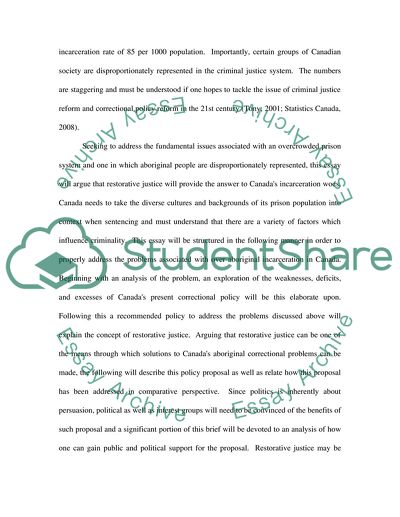Cite this document
(Criminal Justice Reform: Restorative Justice for Aboriginal Offenders Coursework Example | Topics and Well Written Essays - 1500 words - 1, n.d.)
Criminal Justice Reform: Restorative Justice for Aboriginal Offenders Coursework Example | Topics and Well Written Essays - 1500 words - 1. https://studentshare.org/law/1565313-issues-in-diversityfirst-nations-people
Criminal Justice Reform: Restorative Justice for Aboriginal Offenders Coursework Example | Topics and Well Written Essays - 1500 words - 1. https://studentshare.org/law/1565313-issues-in-diversityfirst-nations-people
(Criminal Justice Reform: Restorative Justice for Aboriginal Offenders Coursework Example | Topics and Well Written Essays - 1500 Words - 1)
Criminal Justice Reform: Restorative Justice for Aboriginal Offenders Coursework Example | Topics and Well Written Essays - 1500 Words - 1. https://studentshare.org/law/1565313-issues-in-diversityfirst-nations-people.
Criminal Justice Reform: Restorative Justice for Aboriginal Offenders Coursework Example | Topics and Well Written Essays - 1500 Words - 1. https://studentshare.org/law/1565313-issues-in-diversityfirst-nations-people.
“Criminal Justice Reform: Restorative Justice for Aboriginal Offenders Coursework Example | Topics and Well Written Essays - 1500 Words - 1”. https://studentshare.org/law/1565313-issues-in-diversityfirst-nations-people.


